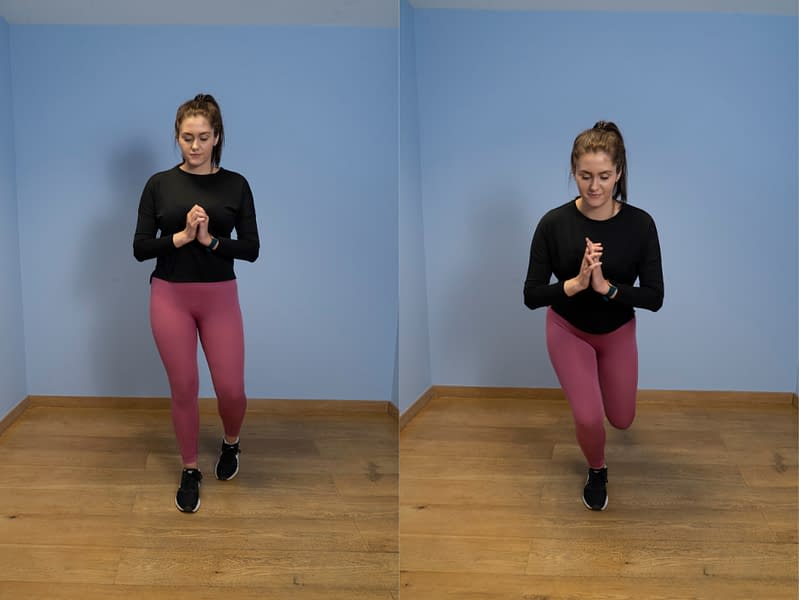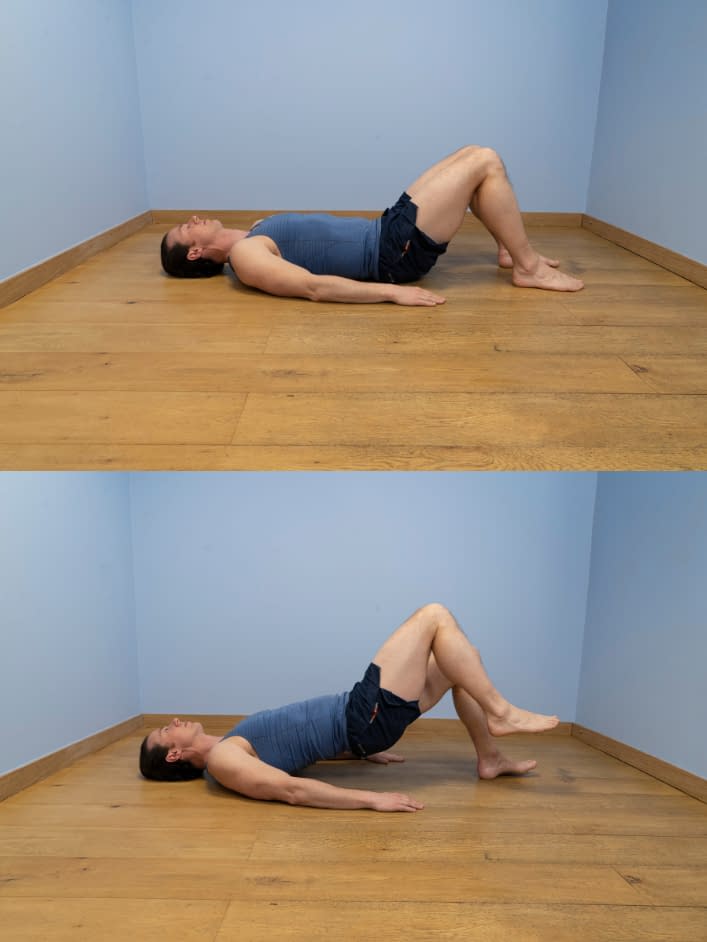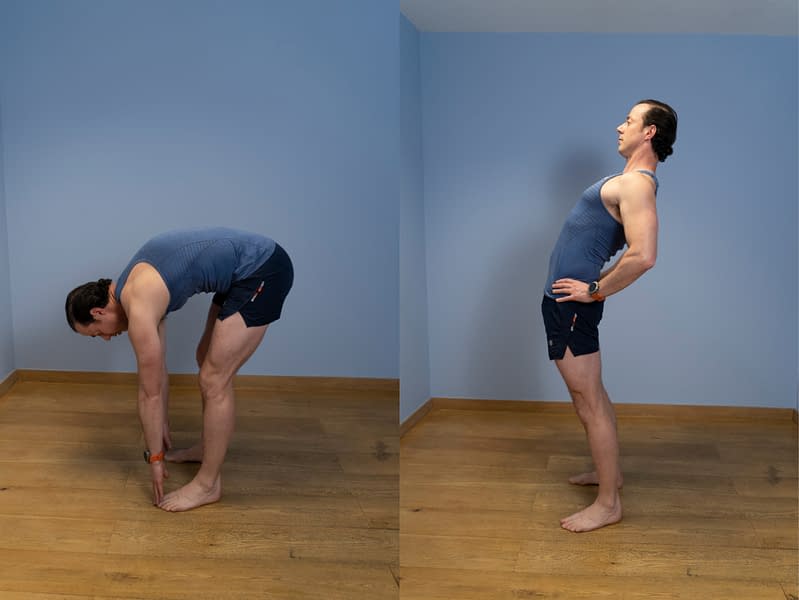Deep Gluteal/Piriformis Syndrome Intermediate Exercise Programme
Aim to perform this programme a minimum of once per day unless prescribed otherwise. As with any new exercise, start slowly (repetitions as able) and build up as you are able within the guidelines below.
Pain should not exceed 3/10 whilst completing this exercise programme.
1. Single leg squat with toe touch
- Start by standing with all the weight on one leg.
- Now place the other leg on the floor on the ball of the foot next to or slightly behind the standing leg.
- Begin with 60% of the weight on the standing leg and 40% on the supporting leg.
- Bend the knee and the same time bend the hip as if you were sitting back into a chair.
- Go down until the standing knee is approximately at a right angle.
- Slowly return to an upright position and repeat.
- As the exercise gets easier reduce the support on the non-standing leg.
2. Bridge with leg lift
- Lie on your back on the floor or bed with your knees bent at 90 degrees and your feet on the floor and your arms down by your side.
- Push your heels down into the floor to gently lift your hips upwards. Lift as high as you feel comfortable but no higher than a straight line between hips, knees and shoulders.
- If you feel discomfort, then try squeezing your tummy and bum muscles before starting the lift.
- From this position lift one leg slightly off the floor and return.
- Repeat on the opposite side.
- Try and keep the pelvis still.
3. Forward bending and arching in standing
- Start standing upright with knees slightly bent.
- Place your hands on your thighs.
- Take a breath in.
- As you exhale slide your hands down your legs allowing your back to bend as you do.
- Go down as far as you feel comfortable and then slowly return to standing.
- Now lean slightly backwards as far as you feel comfortable.
- Keep the knees slightly bent at all times.
We recommend consulting a musculoskeletal physiotherapist to ensure exercises are best suited to your recovery. If you are carrying out an exercise regime without consulting a healthcare professional, you do so at your own risk. If you have any concerns whilst completing these exercises, please contact a healthcare professional.
More Plans
This programme contains a variety of low-level hip strengthening and stabilisation exercises. You will also be introduced to exercises specifically aimed at the sciatic nerve. Where nerves are concerned it is important to work into a sensation of mild tension or discomfort only. Pain should not exceed 3/10 on your perceived pain scale whilst completing this exercise programme.
- 0
- 1
- 2
- 3
- 4
- 5
- 6
- 7
- 8
- 910
This programme is a further progression with challenging progressive exercise. The same principles regarding low-level discomfort and tension remain where the sciatic nerve is concerned. Pain should not exceed 3/10 on your perceived pain scale whilst completing this exercise programme.
- 0
- 1
- 2
- 3
- 4
- 5
- 6
- 7
- 8
- 910


